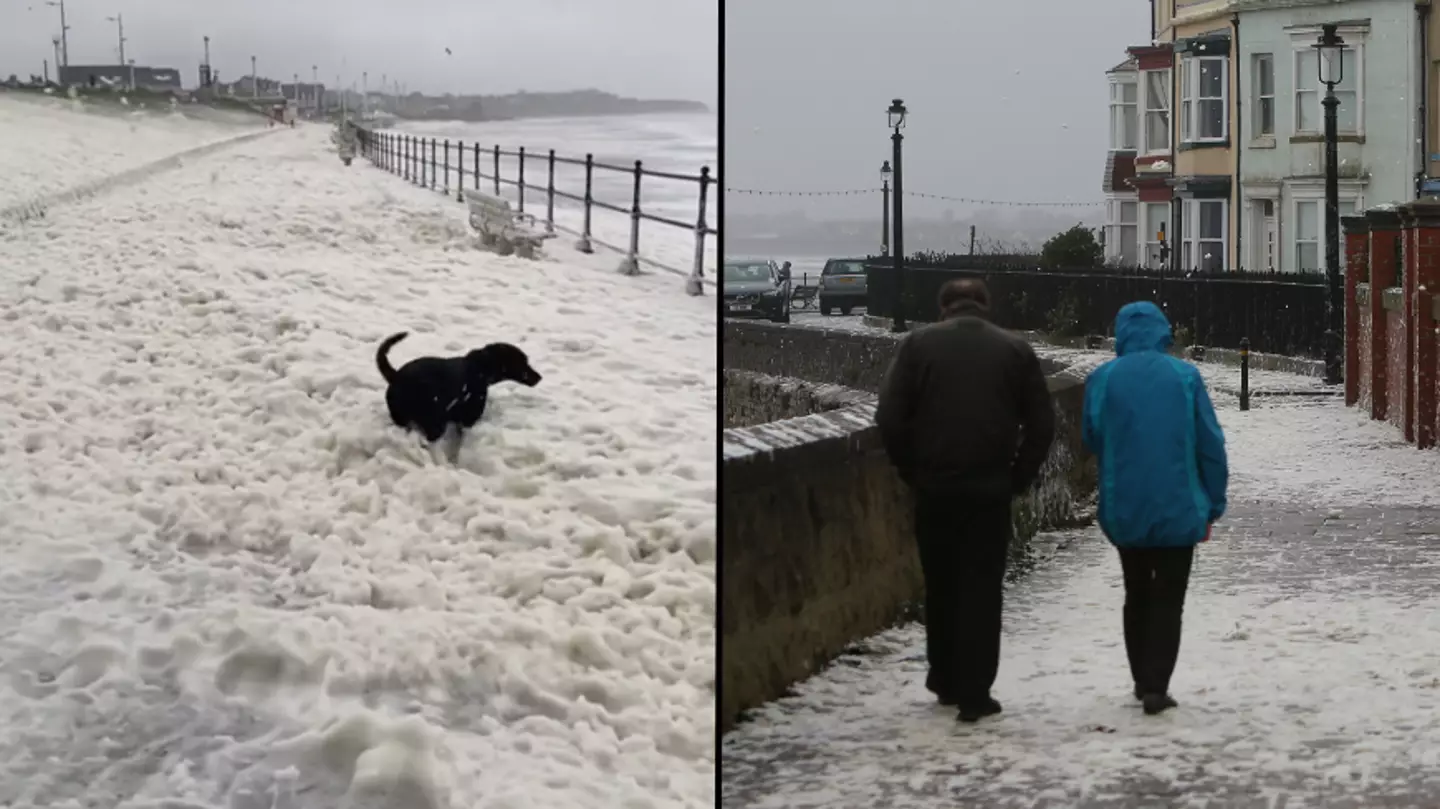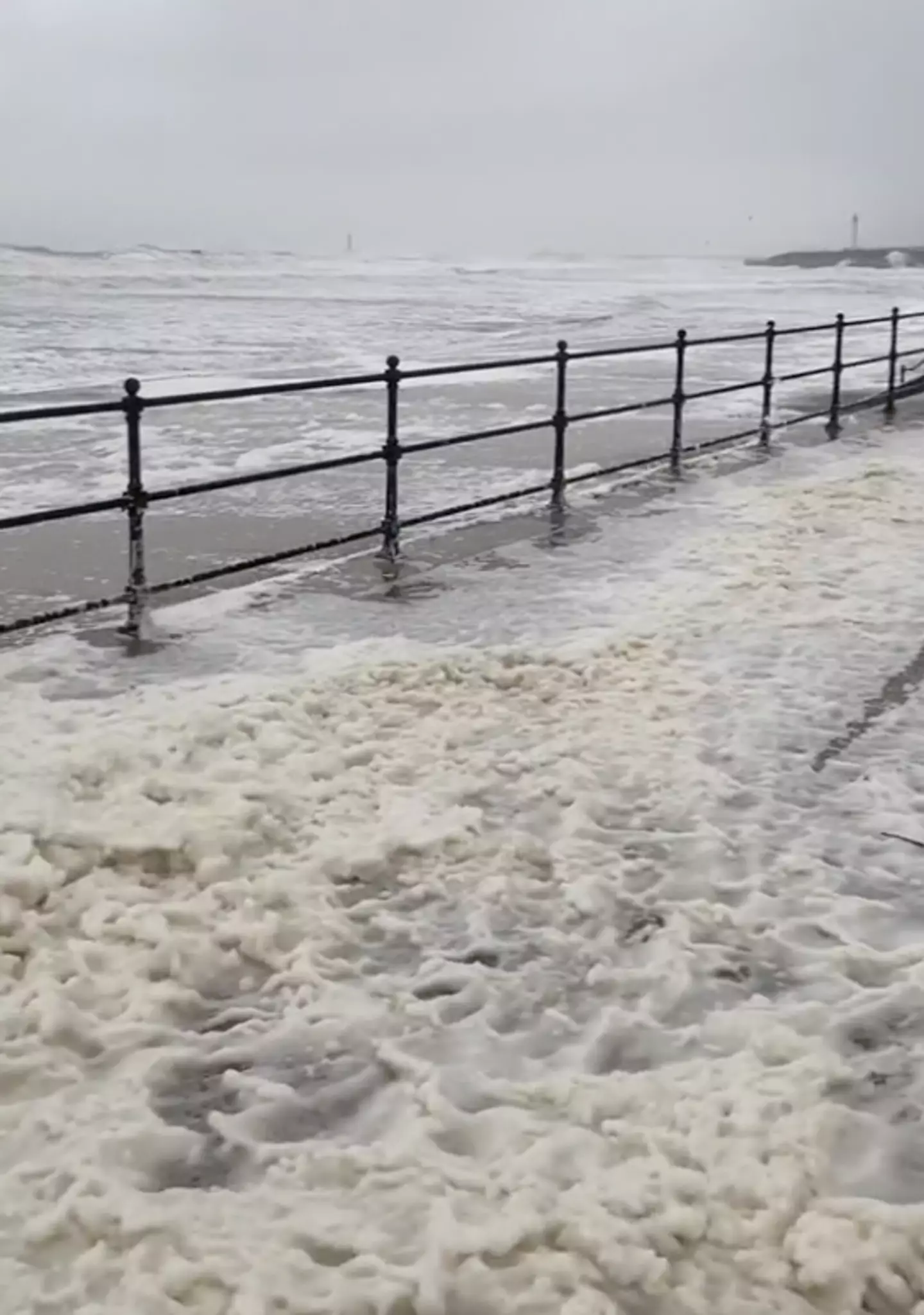
Some parts of the UK are getting hit worse than others as Storm Babet is causing big issues up and down the country.
It seems Scotland is getting the worst of the bad weather as river levels could reach an ‘unprecedented’ five metres above normal levels.
However, videos are emerging on social media, appearing to show a 'cloud of foam' - that looks a bit like snow - in coastal locations across the UK.
Advert
Watch below:
Now, roads and bridges have collapsed as Storm Babet hit Scotland in a big way, as First Minister Humza Yousaf warns 'we have not seen the last of this storm'.
A 200-year-old bridge on the Rottal Estate in Angus was washed away by torrential flood water, while a road connecting Marykirk, Angus, where some houses were evacuated also collapsed.
Advert
The village of Edzell, Angus, was cut off by flood water from three rivers which surround it, but most of the surface water drained away, leaving residents fearful of more rain forecast overnight.
And nearly 30,000 customers lost power but were mostly reconnected by 5pm, with 3,800 properties still without electricity, according to Scottish and Southern Electricity Networks (SSEN).

Three people have died as a result of the storm: a man in his 60s caught in fast-flowing floodwaters that breached a road in Cleobury Mortimer, Shropshire this morning (20 October); a 56-year-old man whose van was hit by a falling tree in Forfar, Angus yesterday; and a 57-year-old woman who was swept into a river in Angus on Thursday.
Advert
Amid the horrific circumstances, images and videos are circulating showing big frothy-looking bits of foame scattered all across UK seasides.
As shown in the clip above, viewers on social media are stumped by the scene over in Sunderland, as sea foam takes over the area.
To understand how sea foam is formed, you need to know that sea water is 96.5 percent water and 2.5 percent salt, which adds up to 99 percent.

The other one percent, according to the National Oceanic and Atmospheric Administration (NOAA), is 'proteins, fats, dead algae, detergents and other pollutants' plus other bits of organic and inorganic matter.
Advert
When this one percent of particles get moved by the wind and waves, they froth, which is the equivalent of putting some sea water in a bottle and shaking it.
The actual bubbles appear because of surfactants, which Popular Science says are 'sticky molecules that cling to the surface between water and air'.
RNLI volunteer Adrian Don explains: "Seawater contains a lot of organic matter, particularly alginates from seaweed which are a natural foaming agent.
"This all gets whipped up by the wind and choppy sea into a foam which the wind then blows onto shore where it accumulates.
Advert
"It looks unpleasant and it’s not usually dangerous although I wouldn’t deliberately come into contact with it."
Featured Image Credit: TikTok/the_hounslows / MI News/NurPhoto via Getty Images